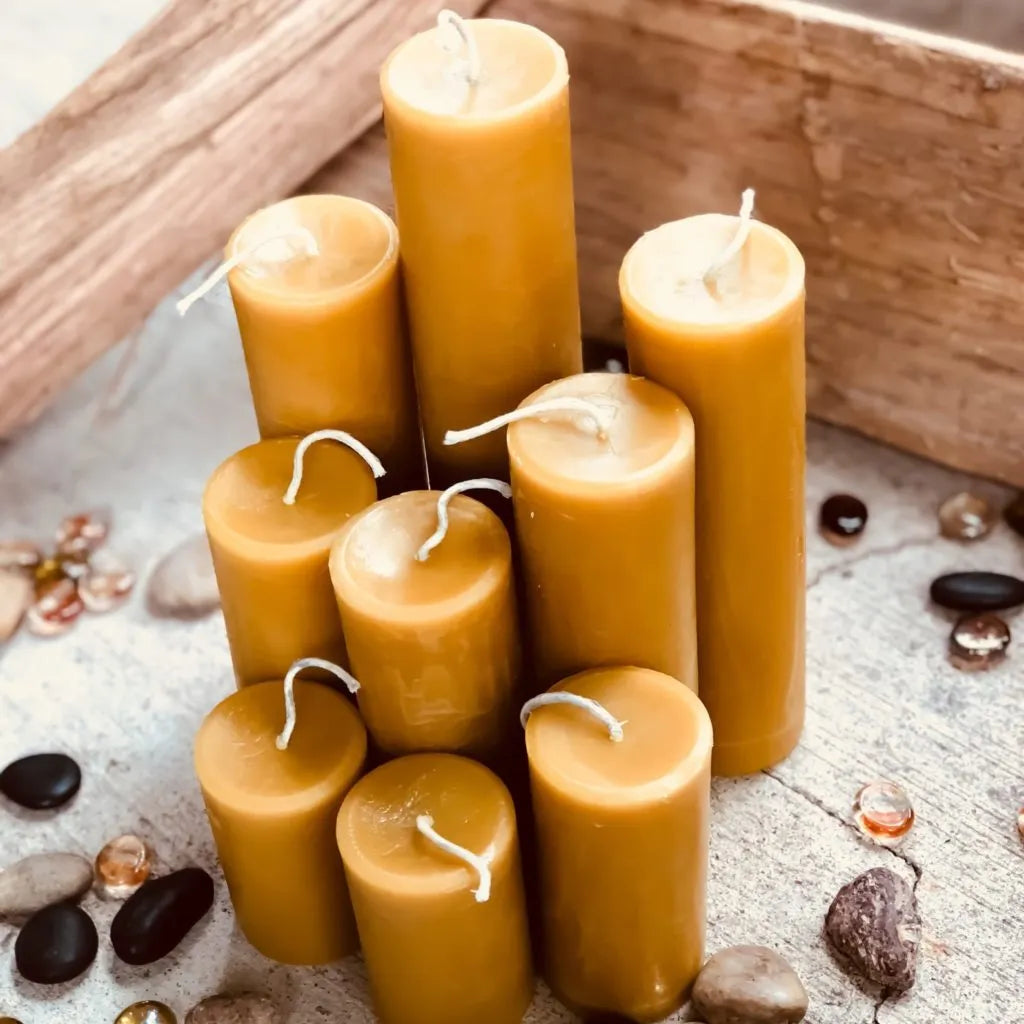Mind Your Beeswax Candles
Honey Do's
For centuries, the best candles around were made of tallow, a form of animal fat. Thankfully, candlemaking has progressed quite a bit since then, creating a number of long-burning options, including one produced by our favorite arthropod: bees.
The most common candle wax material, paraffin, is a petroleum byproduct created in the process of refining crude oil into gasoline. It’s a clear, unscented and highly common wax material that can also be made into crayons, paintballs, surfboard wax, ink and dozens of other things. Though paraffin candles are non-toxic and safe to burn inside your home, exposure to extreme levels of their fumes – think hundreds of candles in one room, all day – could potentially harm you. For this reason, paraffin exposure is regulated by the National Institute for Occupational Safety and Health.
Another common material is soy wax, which is made from the oil of soybeans – an organic and renewable resource. Because soy has a different melting temperature than paraffin, soy candles burn at a lower temperature and more slowly than paraffin. A soy candle will burn up to 50 percent longer than a paraffin candle of the same size. The two wax types can also be blended to create candles that burn at an intermediate temperature.
Finally, there’s beeswax, the waxy material that’s secreted by glands on bees’ abdomens and forms honeycomb. Honeycomb also happens to be edible, with a much denser, chewier texture than honey itself. Beeswax candles, made by melting down this relatively sturdy stuff, can last up to 200% longer than a comparable paraffin wax candle, plus they’re all-natural and non-toxic.
Many have claimed that beeswax candles can clean indoor air by releasing negative ions, which you might have heard about in all those old air purifier commercials. While it’s true that beeswax candles emit negative ions, the full picture is much more complicated, and the scientific evidence of the benefits of negative ions is unclear at best. In short, beeswax candles have enough going for them – a pleasant natural smell, no additives, renewable materials – to be worth the buy. There’s no need to buy into the pseudoscience.
Part of what makes beeswax candles so special is the work bees put into making them. A beehive needs to visit around 33 million flowers to produce a pound of beeswax, which is quite a lot when you consider that bees only visit 100 flowers a day at most. It could take a hive of 10,000 bees over a month to make just one pound of beeswax. However, since bees use beeswax to make honeycomb, it goes a long way; a single pound can hold up to 22 pounds of honey.
A beeswax candle’s smell, much like a honey varietal’s taste depends on what the hive has been foraging. Because it’s made from the same base ingredients – pollen and nectar – as honey, beeswax’s scent is subtly influenced by the various pollens that bees eat and make honey with every day. But, for most noses that aren’t finely attuned to this sort of thing, the smell of beeswax candles simply ranges from “unscented” to “mildly honeyed.”
There’s a lot of misinformation out there about candles, but the truth is, a safe, high-quality candle can be made of many different materials. Next time you’re burning to pick up a candle, consider supporting raw & unfiltered honey and local beekeepers by picking up one made by a hardworking hive.

